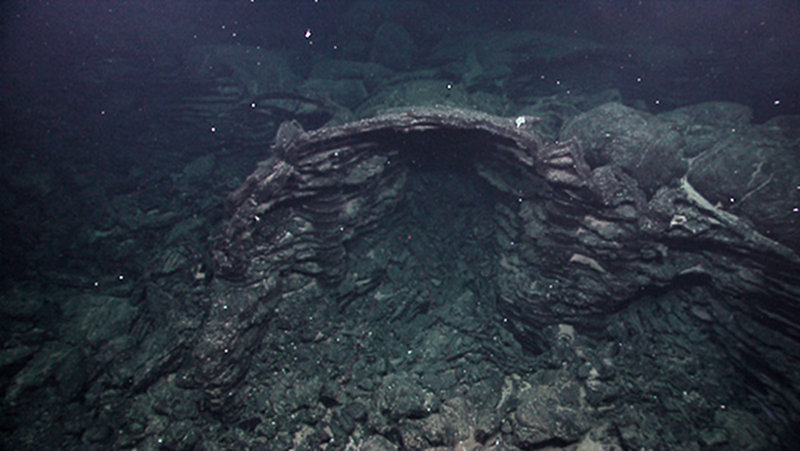
An archway formed by lava pillars supporting a remnant of intact lobate lava flow crust within a large collapsed lava lake. Individual ledges on the pillar form as 'bathtub rings' as the lava freezes to the side of the pillar during the draining of the lava lake. Image courtesy of NOAA Office of Ocean Exploration and Research. Download larger version (jpg, 1.1 MB).
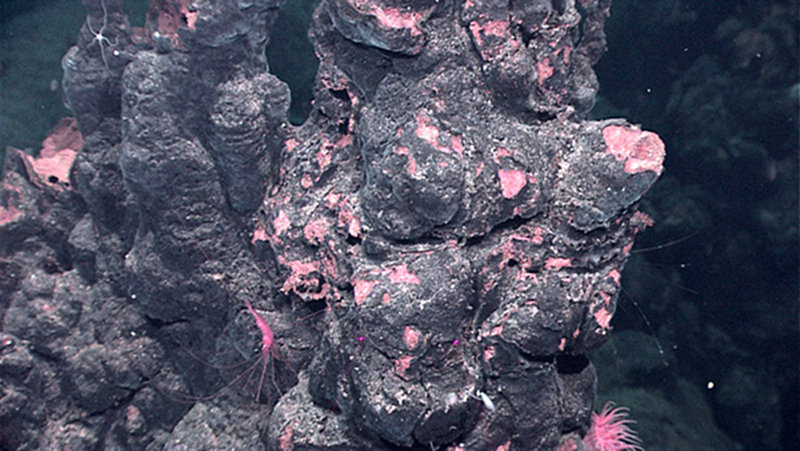
Extinct sulfide chimney structures provide a home for fauna such as the brittle star, shrimp, and anemone seen here. Image courtesy of NOAA Office of Ocean Exploration and Research. Download larger version (jpg, 1.8 MB).
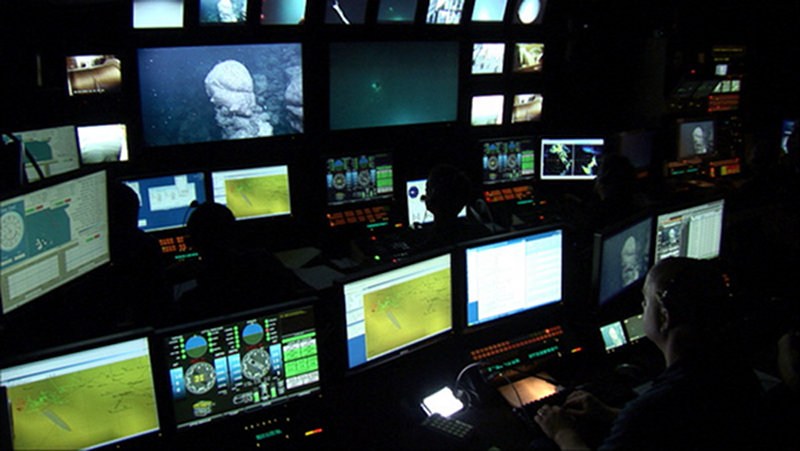
Lead Scientist Tim Shank observes an extinct chimney while narrating the dive from the Okeanos control room. Image courtesy of NOAA Office of Ocean Exploration and Research. Download larger version (jpg, 1.0 MB).
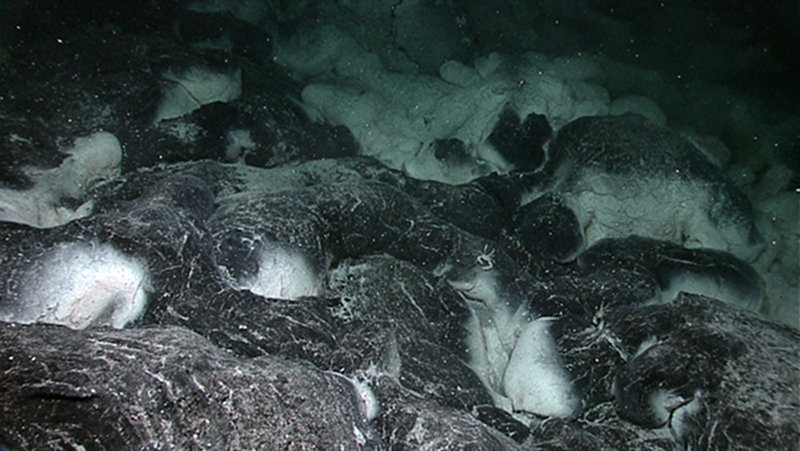
Microscopic microbial material often lines cracks and vent openings in the basaltic seafloor lava following volcanic eruptions. Image courtesy of NOAA Office of Ocean Exploration and Research. Download larger version (jpg, 1.6 MB).
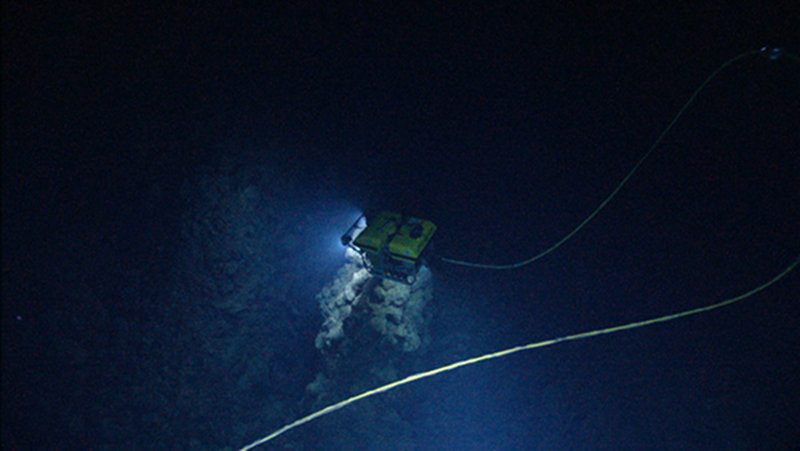
Little Hercules, as seen by Seirios above, hovers over a deep graben feature on the expedition's third dive. Image courtesy of NOAA Office of Ocean Exploration and Research. Download larger version (jpg, 1.7 MB).
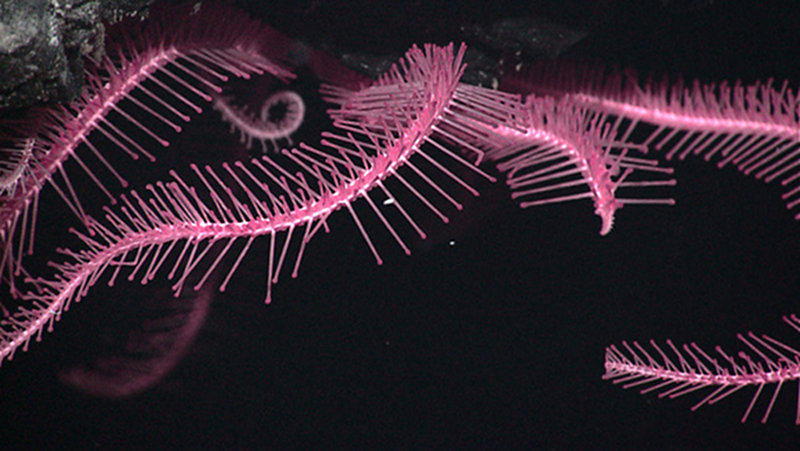
Close-up of a seastar on the underside of the basaltic substrate outside of an active vent area. Image courtesy of NOAA Office of Ocean Exploration and Research. Download larger version (jpg, 1.7 MB).
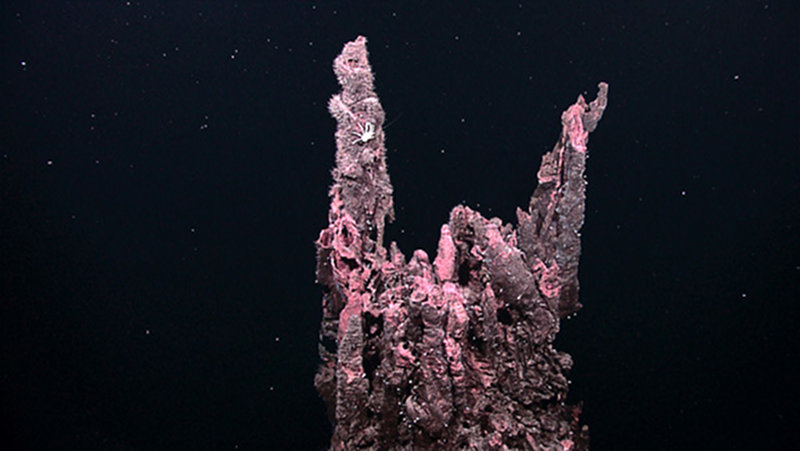
The summit of a 10+ meter extinct chimney, covered in many smaller chimlets that mark sites of former hydrothermal flow. Image courtesy of NOAA Office of Ocean Exploration and Research. Download larger version (jpg, 1.5 MB).
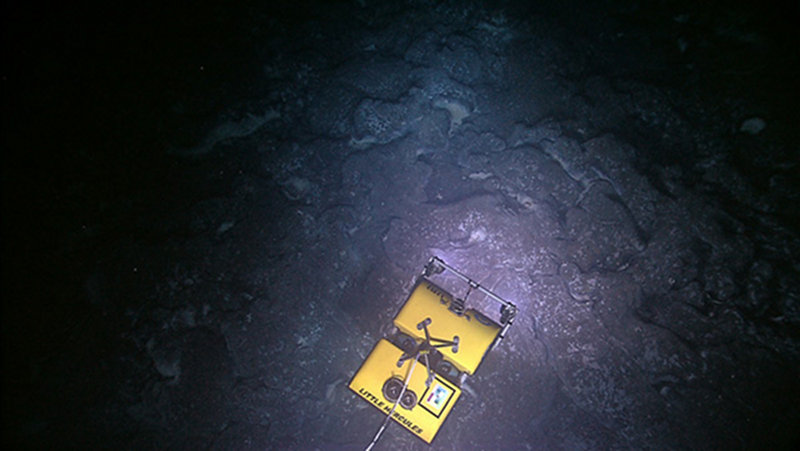
A large expanse of pillow lava is illuminated by Seirios and explored by Little Herc. Image courtesy of NOAA Office of Ocean Exploration and Research. Download larger version (jpg, 1.4 MB).
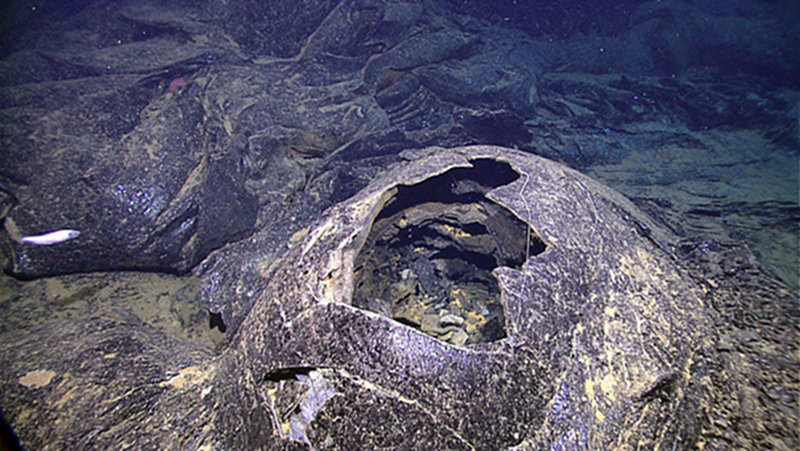
Collapsed top of an inflated lobate lava flow formed as the lava crust cooled as the lava drained out of the bubble during the eruption. Several layers of collapse crust can be seen inside of the hole. Image courtesy of NOAA Office of Ocean Exploration and Research. Download larger version (jpg, 2.0 MB).
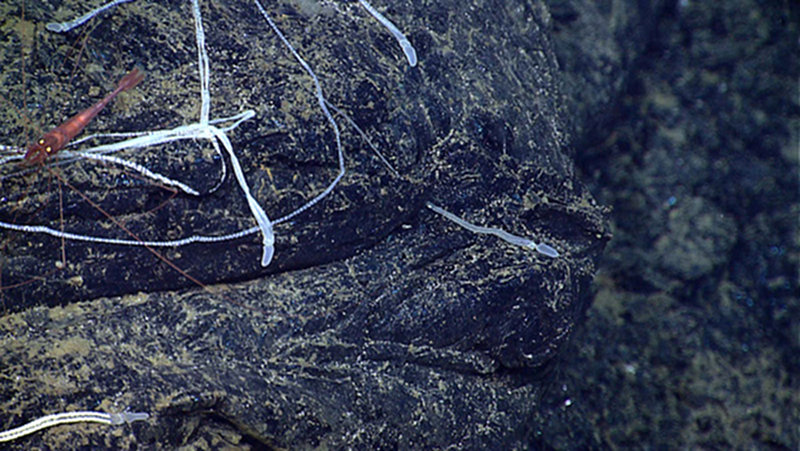
Spaghetti worms frequently colonize areas surrounding vent fields both in the highlights and the East Pacific Rise. Image courtesy of NOAA Office of Ocean Exploration and Research. Download larger version (jpg, 1.9 MB).
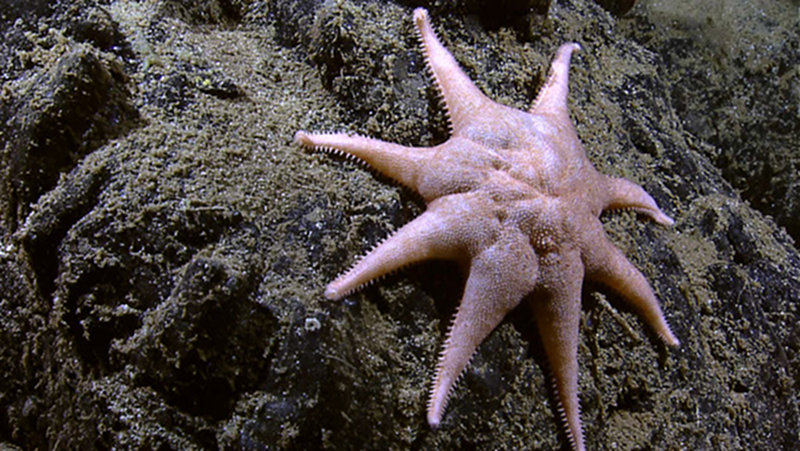
An eight-armed starfish slowly moves over sedimented basalt lava. Image courtesy of NOAA Office of Ocean Exploration and Research. Download larger version (jpg, 1.9 MB).
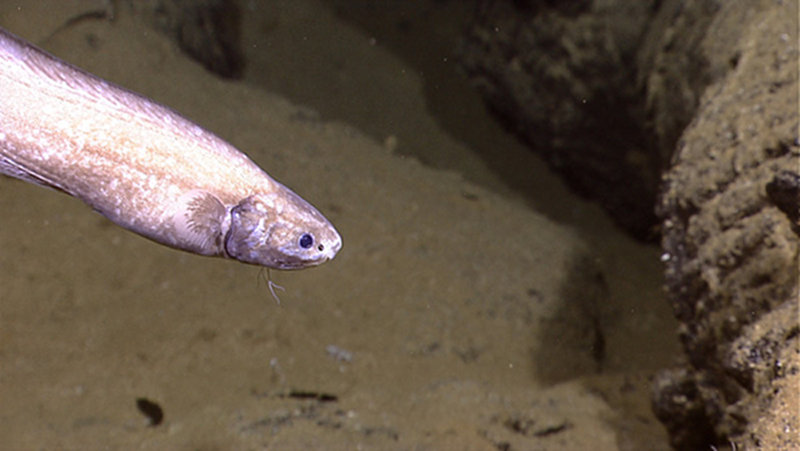
These mottled deep-sea fish were found in abundance on nearly every ROV dive. Image courtesy of NOAA Office of Ocean Exploration and Research. Download larger version (jpg, 1.3 MB).
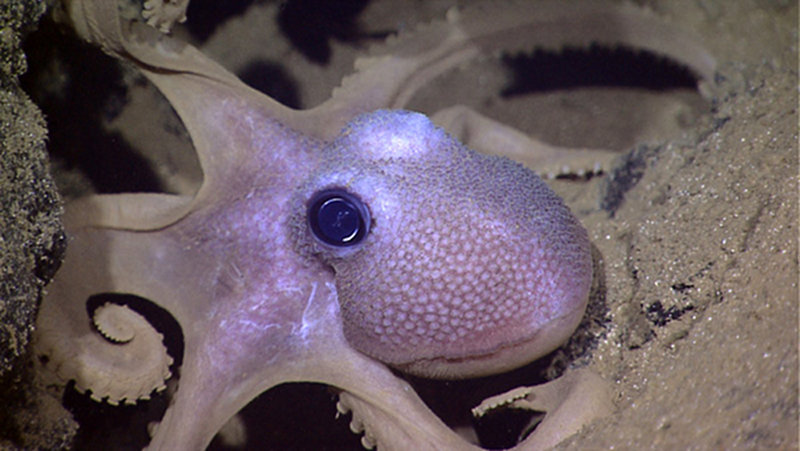
This octopus and several like it were observed at ~2500m during the GALREX expedition. Image courtesy of NOAA Office of Ocean Exploration and Research. Download larger version (jpg, 1.4 MB).
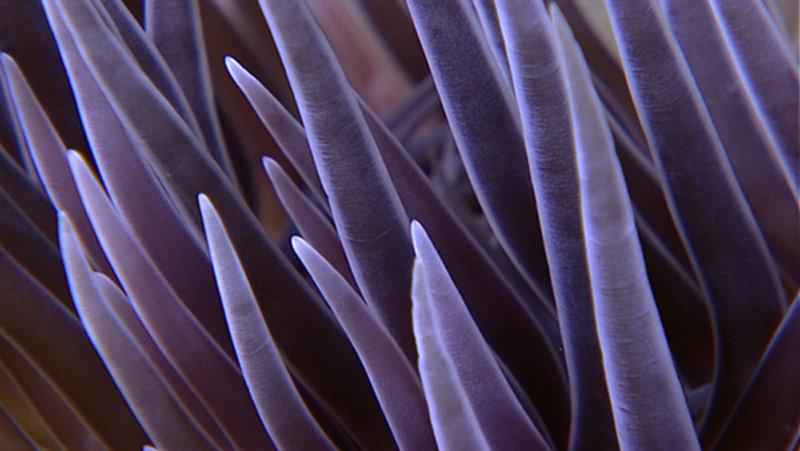
This close-up shows an anemone's tentacles glowing a brilliant purple in the ROV's light. Image courtesy of NOAA Office of Ocean Exploration and Research. Download larger version (jpg, 1.2 MB).

Close-up of a galatheid crab: these scavengers thrive in musselbeds and waning hydrothermal vent environments. Image courtesy of NOAA Office of Ocean Exploration and Research. Download larger version (jpg, 340 KB).
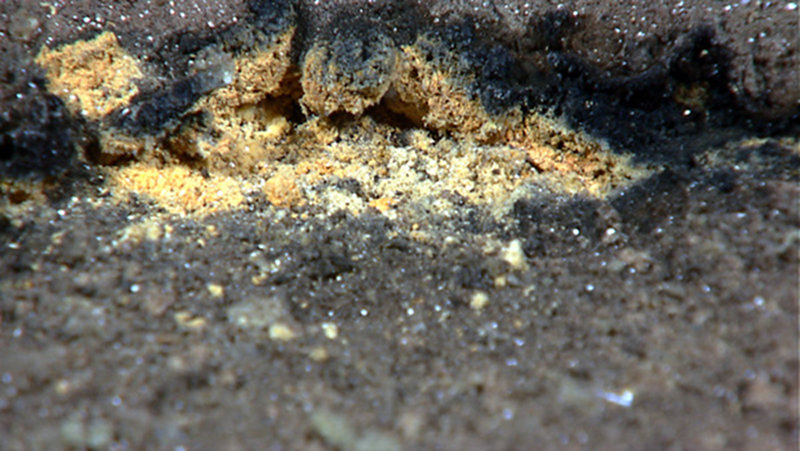
Yellow sulfide deposit at a crack at the base of an off-axis sulfide mound in the seafloor, seen on the final dive of the expedition. Image courtesy of NOAA Office of Ocean Exploration and Research. Download larger version (jpg, 1.5 MB).
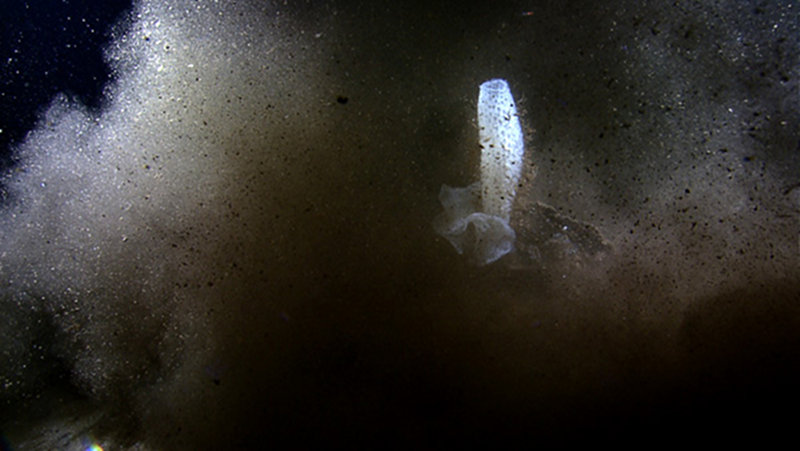
Little Hercules stirs up sediment around a large glass sponge. Image courtesy of NOAA Office of Ocean Exploration and Research. Download larger version (jpg, 1.3 MB).
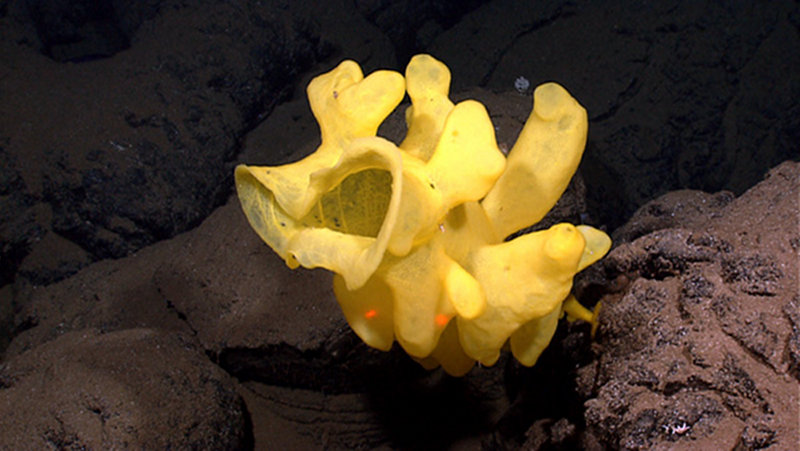
A bright yellow sponge stands out against the sediment-covered lava on the final dive of the expedition. Image courtesy of NOAA Office of Ocean Exploration and Research. Download larger version (jpg, 1.5 MB).

A close-up of branching deep-water coral clearly showing individual polyps with outstretched, food-gathering tentacles. Image courtesy of NOAA Office of Ocean Exploration and Research. Download larger version (jpg, 1.5 MB).

A squid flashes in front of Seirios' HD camera. Large schools of squid were commonly seen in the 'twilight zone' on descent and ascent of the ROVs. Image courtesy of NOAA Office of Ocean Exploration and Research. Download larger version (jpg, 1.3 MB).